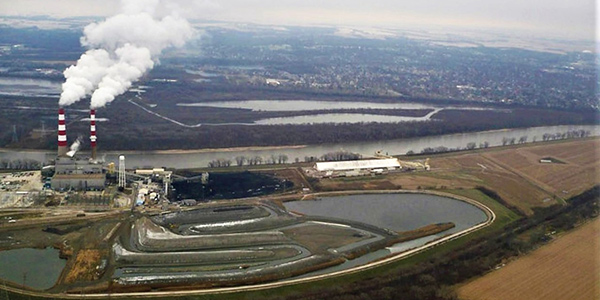Vistra Energy last week said MISO’s “irreparably dysfunctional” capacity auction design deserves blame for its decision to shutter the last of its Midwestern coal plants.
Houston-based Vistra said it will wind down operations at seven coal plants in Illinois and Ohio by 2027, “or sooner should economic or other conditions dictate.” The competitive supplier said the closures of the four Illinois-based plants are partly because of low capacity payments in the MISO market. Vistra said low natural gas prices, EPA requirements, inadequate state subsidies and an influx of new generation also played a role in its decision to idle the units.
The retirements will leave Vistra with a coal generation presence only in its native Texas by 2027. The retirements will take about 7 GW of capacity offline, mostly in the MISO footprint. They include:
- 585 MW from the Edwards Power Plant in MISO’s Illinois territory by 2022;
- 1,185 MW from the Baldwin Power Plant in MISO’s Illinois territory by 2025;
- about 1 GW and an additional 239 MW in natural gas-fired generation from the Joppa Power Plant in MISO’s Illinois territory by 2025;
- 1,108 MW from the Kincaid Power Plant in PJM’s Illinois territory by 2027;
- 1,020 MW from the Miami Fort Power Plant in PJM’s Ohio territory by 2027;
- 615 MW from the Newton Power Plant in MISO’s Illinois territory by 2027; and
- 1,300 MW from the Zimmer Power Plant in PJM’s Ohio territory by 2027.
Most of the plants range in age from 50 to 65 years old. The move follows Vistra’s announcement last year to close four other aging coal plants in downstate Illinois.
Vistra Chief Operating Officer Jim Burke said the company has gone “above and beyond” to try to make the coal plants viable.
“The advance notice of these retirements provides us with ample time to work with our impacted employees and communities to ease the impact of the closures,” Burke said in a statement. “We’ve proven ourselves in previous similar situations to live up to our core principles, taking care of our employees and communities. That will not change.”
The company’s statement included a plug for the proposed Illinois Coal to Solar and Energy Storage Act, which would bill ratepayers to develop 300 MW of utility-scale solar and 150 MW of energy storage at 10 existing power plant sites in central and southern Illinois.
Vistra also framed the announcement as an opportunity to accelerate carbon-reduction goals. It introduced a plan to achieve net-zero emissions by 2050 — a more aggressive target than its previous 80% reduction goal by midcentury. It also touted what it called the “Vistra Zero” portfolio, which contains six new solar projects and one battery energy storage project all located in the “attractive Texas ERCOT market.”
MISO Mum on Criticism
MISO representatives declined to comment on Vistra’s complaint over its Planning Resource Auction design, which employs a vertical demand curve. In 2018, FERC Vacates, Upholds MISO Resource Adequacy Rules.)
The Brattle Group in August criticized MISO’s PRA clearing prices as “overly volatile,” saying it muddies investment signals. Brattle senior associate Walter Graf said the RTO’s vertical demand curve results in “bipolar” pricing that is “not consistent with true reliability value, thereby lowering efficiency and limiting the usefulness of prices to signal value.”
Graf suggested MISO adopt three objectives for its PRA:
- Enforce resource adequacy requirements on LSEs with penalties for being short “while respecting constraints between sub-regions.”
- Facilitate transactions of residual capacity at “fair prices that reflect market conditions.”
- Inform timely and efficient investment and retirement decisions as LSEs and states plan how they meet resource adequacy objectives.
However, Graf said Brattle’s critique was not to be construed as a recommendation that MISO adopt a sloped demand curve.
Four years ago, MISO attempted to bifurcate its capacity market by holding a forward capacity auction for its competitive retail areas — which account for less than 10% of its total load — three years ahead of the usual PRA. FERC rejected the proposal.
Vistra’s announcement is the latest in a string of coal generation retirement decisions by the company.
Since 2010, Vistra has announced the retirement of more than 19 GW at 23 coal and natural gas plants. Vistra said most of those announcements have occurred in the past four years, representing more than 16 GW at 19 coal plants. The company also cited an “economically challenged” environment in the ERCOT market when it announced two coal plant closures in 2017. Before its acquisition by Vistra, Dynegy also blasted MISO’s market design as a reason its downstate Illinois coal plants couldn’t survive.
The Sierra Club said Vistra’s latest announcement is among the largest coal retirement commitments ever made in the U.S. It used Vistra’s announcement to call on the company to set retirement dates for its three remaining coal plants in Texas.




